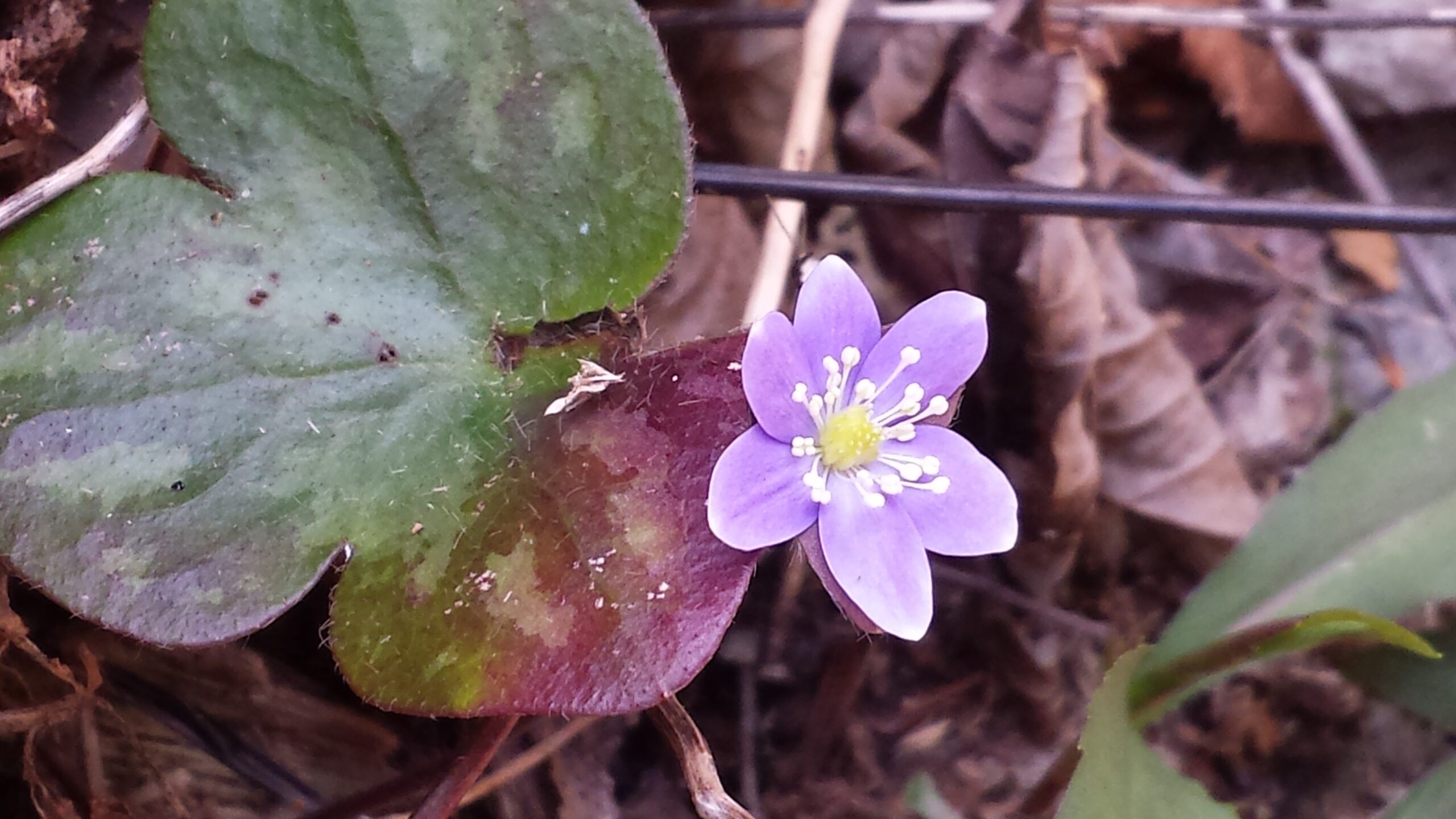Hepatica americana (Photo Credit: Dan Whitten)
by Dan Whitten
I always like to introduce a plant by giving its name, location, and description, and then tell other stories like how it got its name or how it is useful.
The common names of two similar plants in SC are Sharp-lobed Hepatica (Hepatica acutiloba) and Round-lobed Hepatica (Hepatica americana). The name “Hepatica” can be interchanged with the name “Liverleaf” (not to be confused with “Liverwort,” which is a spore producing vascular plant). Liverleaf is a seed-producing, herbaceous plant of the forest floor.
The scientific names have been changed a couple of times in Weakley’s Flora of the Southeastern United States. On May 21, 2015, the genus for both species changed from Hepatica to Anemone. Then on October 20, 2020, it changed back to the genus Hepatica. Thankfully, it remained the same in the latest edition of April 24, 2022. Interestingly, though, the 2022 version of A Guide to the Wildflowers of South Carolina by McMillan, Porcher, Rayner, and White categorized it as the genus Anemone. (This book was featured in the September 2022 statewide SCNPS program and is a fantastic reference for flower enthusiasts.)
Of the two species of Hepatica occurring in South Carolina, the Sharp-lobed is the less common and occurs over calcareous or mafic rock, typically found in the mountainous part of the state. The Round-lobed is more common, with a wider geographic distribution. The differences between the two are in the tips of the lobes of the basal leaves, which are either sharp or rounded (hence the common names). In the bracts which are directly below the petaloid sepals, they are sharp tipped in the H. acutiloba and round tipped in the H. americana.
Impress your (granted, thoroughly nerdy) friends by asking a trick question: How many petals does Hepatica have? Answer: none! They have instead 5-12 (typically around 7) petaloid sepals which are born on hairy pedicels and subtended by 3 bracts that mimic the sepals.
The petaloid sepals can be white, blue, lavender or purple. The basal leaves persist throughout the winter, and generally the new leaves come out well after the flowers in the spring. The flowers of the upstate reach peak bloom in March, but they can also be found at Stevens Creek Heritage Preserve as early as February and up near the Blue Ridge Parkway as late as April. At Station Cove Falls, I’ve seen a few plants flowering on the first day of the year, and once I saw a flower on Christmas Eve. So I challenge you to find a native and herbaceous wildflower that blooms any earlier in the year than Hepatica.
According to the Doctrine of Signatures, a plant was used to treat the part of the body that it resembled, and because the lobes of the brownish leaf of Hepatica in winter resembled the liver (aka the hepatic organ) in color and shape, it was used to treat everything from cowardice to freckles, including jaundice and other ailments believed to be of the liver.
George Hyams was collecting Hepatica in May of 1877 when he discovered the then long-lost plant that we now know as Oconee Bells, or Shortia galacifolia.




